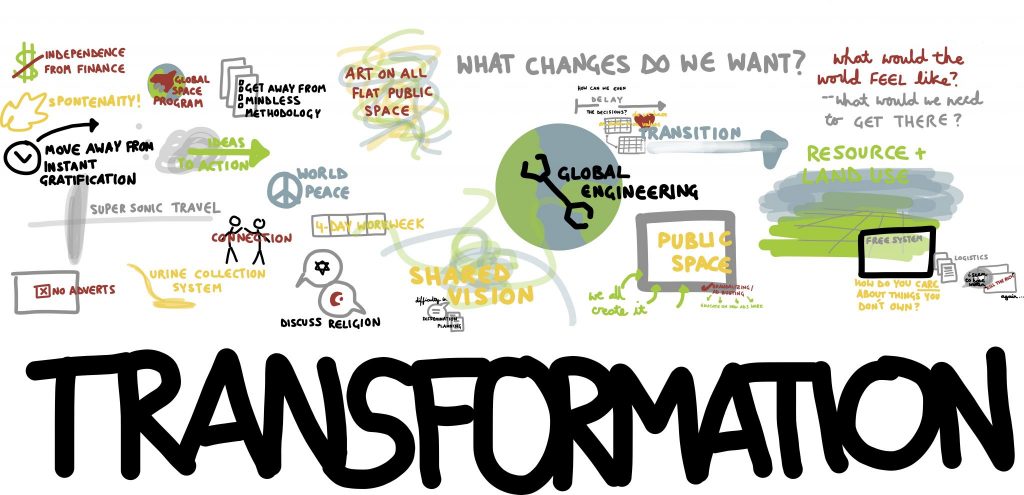In a study recently published by Forbes, it was revealed that a staggering percentage of all tech initiatives wherein the CEO was not deeply involved failed. Is it any wonder, then, that the CEO is considered the captain of the ship called digital transformation? Several research institutes, technology educators, and industry leaders have commented on how digital transformation is as much a strategic shift as it is a technological shift in the ways and works of the enterprise. Of course, the entire C-suite leadership has to play a role in managing digital transformation and driving the ship forward. But none of them are as critical to the journey’s success as a CEO.

The modern enterprise’s CEO can’t simply direct the digital transformation ship from the side boat. They have to be behind the wheel, giving direction, speed, and purpose to the journey. CEOs don’t merely have to facilitate the shift toward digital transformation; they have to lead the change. This is where the “how” comes to the picture. Managing digital transformation calls for revolutionary methods; they’re expensive, they’re resource and time intensive, and they require participation from pretty much everyone on the organization. The result — CEOs can often feel left high and dry, tasked with managing digital transformation. In this guide, we bring structure and method to the art of managing digital transformation. So leaders — read on.
Lead, don’t follow
Here are the most common triggers that typically starts the ball rolling to digital transformation:
- Risks of being outpaced by more agile startups.
- The increased adoption of new technologies among competitors in their immediate markets.
- Saturation in the technology market driving down costs, making the product absolutely inexpensive.
- Feedback from trusted IT vendors and managed service providers about the most bought technologies.
While it’s not wrong to act on these triggers, it’s clear that if your enterprise technology adoption decisions are made based on them, digital transformation is still a distant rainbow. To be the trendsetter, to be the agile enterprise that outpaces competitors and the organization that stakes its claims on the future — you need to move at the same pace as that of the digital space. Be prepared for the next big technological shift. Push vendors to educate you, take calculated risks, and engage consultants that can help you choose the most value-adding technologies.
Managing digital transformation: Opportunities and risks
The impact, scope, and effect of digital technologies differ across different industries and markets. This makes the CEO’s task challenging, as they need to identify the key areas where digital transformation can lend benefits in the enterprise. The four major areas where digital technologies can bring in a lot of enablement and empowerment are: digital products and services, disruptive models of service delivery and revenue generation, enhanced customer engagement, and operational productivity improvements. CEOs need to assess the opportunities and risks in all these areas and prioritize accordingly. Remember, initial success in managing digital transformation efforts can pave the way for smooth sailing thereon. General Electric’s cloud-focused industrial operating system Predix is the perfect example. GE’s CEO aligned the company’s think tank to the market trend of value-added services in industrial sectors.
Choreograph the enterprise shift
A massive pitfall that enterprises find hard to keep their eyes on is about failing to define their digital strategy clearly. Even if you’ve taken care to do better, there’s another pitfall, equally dangerous —failing to mobilize people, processes, and systems to prepare the enterprise for the digitally powered revolutions that await. Surprisingly, IT turns out to be one of the common culprits, swamped with old processes and fatigued with inertia. This makes it a problem for CEOs to align enterprise functions with the strategic journey of managing digital transformation. CEOs, hence, need to undertake initiatives to:
- Educate the enterprise about the need to overhaul the current technology systems and processes.
- Define new roles and responsibilities, identify and nurture change leaders, and adopt new ways of doing things.
- Set up capabilities, mechanisms, and processes that contribute to the transition of enterprise functions to the digitally powered era.
Digital transformations require you to shake up the status quo, and to do that, CEOs need to show the change, be the change, and then drive the change.
Bringing in financial discipline

We mentioned earlier how digital transformation can be too expensive for enterprises and break their back. Well, it’s the CEO who has to balance things out and find the will to practice and promote financial discipline while managing digital transformation. Quite easily, different departments can end up inviting chaos by beginning too many technological adventures simultaneously. CEOs know that lessons don’t have to be learnt the hard way. By leveraging their networks, engaging in collaborative dialog with vendors, sponsoring focused research in technology identification, and promoting pilot tests, CEOs can help their enterprises warm up to the latest technological forces without bringing in chaos, and without letting the lids over cash containers blow off.
Keep the impetus on innovation and novelty
Status quo is the biggest risk that faces every enterprise today. Riding on one’s past laurels is just not an option anymore, considering the pace and scale of digitally powered disruptions that are sweeping industries all over. CEOs need to embrace innovative thinking, need to drive the message across the enterprise, and most importantly, need to keep pushing so that inertia never sets in. Your competitors are crazily brainstorming about the latest technology that’s just come out of the tech laboratories of Silicon Valley. Even your brightest employees are a few steps away from starting up on their own. Technologies will ensure that only the best rule the market. Digital transformation is the only train; CEOs need to keep fueling it with innovation and novelty to make the journey a success.
Managing digital transformation is probably the biggest challenge for the modern enterprise’s CEO. The strategic inputs shared in this guide will help leaders prepare for the challenge.
Photo credit: Shutterstock



